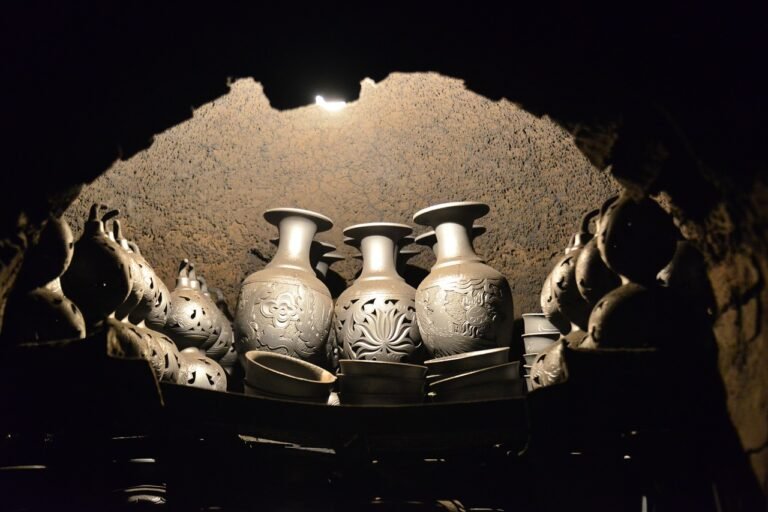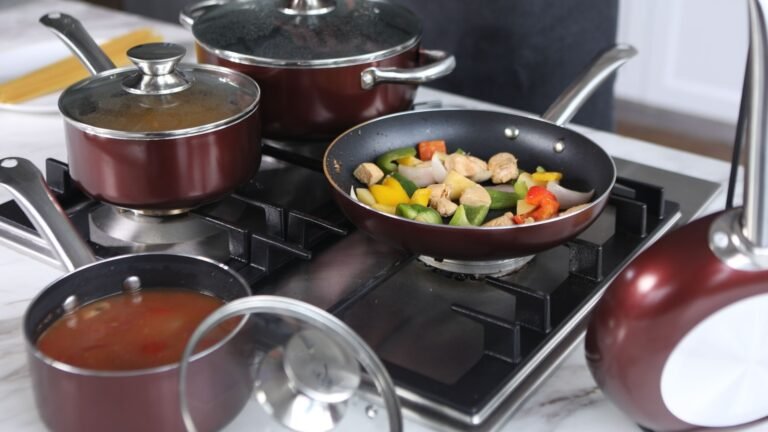What Temperature Can I Open My Pottery Kiln?
The operation of a kiln requires a lot of experience and knowledge. You have to consider the safety of your pottery and yourself. A kiln’s correct handling has many benefits. At what temperature can I open my Pottery Kiln?
125 – 250 degrees Fahrenheit (0F) is the recommended temperature range for opening a kiln. Different manufacturers and types of kilns are the cause of this variation. When the kiln is at room temperature, it is the best time to open it.
Heat sources for kilns can be electric, propane, or high-temperature burning wood. It depends on the type of kiln. The intense heat of kilns may sometimes cause them to develop hazardous gasses. Pottery can crack or even explode if steam builds up under pressure.
At What Temperature Can I Open My Pottery Kiln?
Be patient until the temperature falls below 125-250°F. To be safe, wait as long as possible before opening the kiln. Once the pottery is cool enough to touch, unload the kiln.
As a result of a sudden drop in temperature, pottery can develop cracks or tiny fractures. “Crazing” is what you call this process. Learn more about crazing in this video.
What Are The Risks Of Opening A Kiln When It Is Hot?
The term “thermal shock” refers to a sudden change in heat. As a result, pottery experiences significant stresses and strains.
Ceramic expands in the presence of heat and contracts as it cools. When fired, clay and glaze should expand and contract together for consistency. Otherwise, it may cause cracks and fractures.
It is common for pottery to break along its weakest lines when there is too much tension across it. Temperature changes need clay to manage its internal tensile strength.
Compared to ceramic, greenware can withstand volume expansion caused by heat. The bisque firing process turns greenware into hard and brittle ceramic. This brittle ceramic has a challenging time handling changes in volume. At this point, pottery is more prone to cracking.
Sudden temperature changes that lead to rapid contraction can damage ceramics. By cracking or shattering, ceramic may release this internal pressure. Temperature changes can also damage the bricks of the kiln. If the kiln is too hot, opening it can shorten its life.
Is The Glazing Susceptible To Thermal Shock?
Glazes are also susceptible to crazing caused by sudden temperature drops. During a sharp cooling, the glazing can lose its intensity and luster.
Quartz Inversion And Cristobalite Inversion: What Are They?
The cooling process stresses ceramics at these points. Inversion occurs when clay expands as it heats and cools. A sharp increase in quartz content occurs at around 1064 0F in clay.
Cristobalite also changes like quartz inversion. As opposed to quartz inversion, cristobalite inversion is sharper. If ceramics contain cristobalite, they will show intense shrinkage as they cool. It can sometimes save glazes from crazing by compressing them.
How Long Does It Take For A Kiln To Cool Down?
The time it takes a kiln to cool down is the same as it needs to reach its peak temperature. Several factors determine how long it takes to achieve the final cone temperature in a kiln. A bisque or glaze fire is one factor to consider.
Clay body and glaze also affect kiln opening temperatures. Raku clay, for example, can deal well with thermal shock. The clay will speed up the opening of your kiln.
Are There Any Reasons For Varying Cool-Down Times?
Time taken for a kiln to heat and cool down depends on its size, ventilation, brand, and type of clay. Compared to large kilns, a smaller one can heat up and cool down faster. A downdraft ventilation system can help a kiln cool down sooner than an unvented one.
Some brands that come with thicker insulation take longer to cool down. The bisque fire takes longer than the glaze fire. It requires a slow, gradual increase in heat. It takes longer to glaze high fire clay than low fire clay.
Glaze fires take much longer to cool down than to reach their highest temperatures. It is possible for glazing to crack or craze as a result of rapid cooling. Glazing needs time to solidify after melting.
What Is The Most Appropriate Time To Prop Open The Kiln Lid?
Prop open the kiln lid until between 1100 and 1200 degrees Fahrenheit. This period is the “burn-off stage” or the beginning of the bisque fire. Evaporation of moisture and the release of gasses occur during this time.
The kiln must vent these gasses, fumes, and vapor. Propping the kiln lid open and leaving the peepholes open will allow them to escape. It is common for some kiln owners to crack the kiln lid during the burn-off stage.
Use kiln props, fire bricks, and ceramic wedges to prop the lid. After the fumes and moisture have burned off, shut the lid and peepholes.
Opening A Kiln When It Is Hot: Are There Any Precautions?
Sometimes, you may be unable to wait for the kiln to cool down to its recommended temperature. On such occasions, it would be advisable to follow safety precautions.
Step by step, open the kiln. Remove the plugs from the peepholes first. If you want to peek inside the kiln, turn off the vent first. It will cause a rapid temperature drop if the vent draws cold air into the kiln.
Be sure to put on fire-resistant gloves to protect your skin. Before loading or unloading the kiln, turn off all switches. You can learn more about kiln safety by watching this video.
Try not to open the kiln if it makes a pinging sound when you try to open it. During shrinkage over the ceramic body, the glazing cracks and contracts. It may produce that noise.
Conclusion
An intense amount of energy radiates from a peephole. Protect your eyes by wearing safety glasses when you peer into the kiln. Wear tight-fitting clothing around hot kilns. Ensure that your dress does not come in contact with the kiln opening or hot kiln surfaces.







